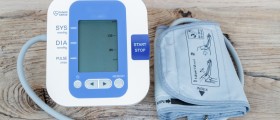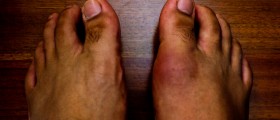
Syphilis - Overview
Syphilis belongs to the sexually transmitted diseases and is caused by Treponema pallidum. The infection spreads via direct sexual contact. Syphilis has several stages and the rash typically occurs in the second stage of the disease. This disease has numerous symptoms which are different in different stages of the disease. However, none of them should be neglected since if left untreated syphilis may cause serious complications and damage many organs and organ systems of the body.
The disease develops through several stages, so there are primary syphilis, secondary syphilis and latent syphilis also known as tertiary stage of the disease. The disease is easily treated in the first stage of the disease and this way complications are practically impossible. The disease can be also successfully treated in the second stage while the latent stage is usually with no symptoms or signs of the disease. Therefore, it is not treated and this leads to numerous complications.
Syphilis Rash
The initial stage of syphilis features with specific sores called 'chancre'. These sores form at the site of infection. The skin lesions occur 10 to 20 days after the exposure to the bacteria and last approximately six weeks. Some people neglect these skin changes and do not visit their doctors. If this happens the diseases enters the secondary stage.
Syphilis rash is the most prominent characteristic of the secondary stage. It affects many parts of the body and may spread to more than one region. The rash consists of red or reddish-brown spots. Initially the rash affects the palms of the hands and soles of the feet. Later the rash occurs at moist areas of the body including armpits and groins. In women rash may occur under the breasts. Syphilis rash is not itchy or painful. In spite of that one is supposed to report any kind of rash to his/ her doctor. In certain number of patients the rash may be faint and hard to notice. These patients do not visit their doctors because of the rash. They complain about other symptoms of the secondary stage of the disease.
Accompanying symptoms of syphilis rash are swollen and painful lymph glands, fever, fatigue, headaches and possible weight loss. All the mentioned symptoms typically last for more than a few weeks.
Syphilis rash does not require any specific treatment. It is significant since it helps in setting of the diagnosis and it actually drives patients to see their doctors. On the other hand, swollen glands, headaches and other symptoms of the secondary stage require specific medications. To eradicate the bacteria the patients are prescribed certain antibiotics.

















Your thoughts on this
Loading...